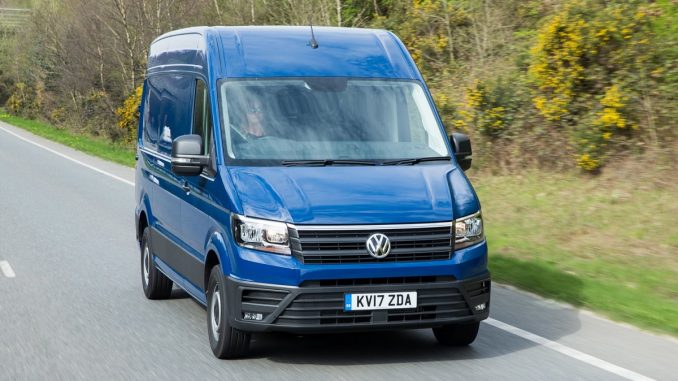
Volkswagen has led the way in the introduction of Autonomous Emergency Braking (AEB) in Light Commercial Vehicles (LCVs).
The German manufacturer announced back in June last year that it would fit AEB as standard to all new Volkswagen vans.
We’ve seen that come to fruition with the recently launched into Australia new-generation Crafter.
True, we’re still waiting on the Volkswagen Amarok to get AEB – stay up to date with the progress of AEB integration into the utes available in Australia.
Never the less the van commitment is a welcome one, especially given the simple fact that if Aussie workers get injured on the job it is most likely while behind the wheel of a business vehicle.
And just how much difference can AEB make?
Volkswagen UK reckon if every LCV in the UK had the tech there would be 2,500 fewer road crashes annually.
The manufacturer has quoted Department for Transport van accident statistics that show the cut in van related crashes would result in there being 348 fewer road deaths/serious injuries in the UK each year.
Check out AEB in action in the new-gen Crafter:
Carl zu Dohna from Volkswagen Commercial Vehicles (UK) says the company is proud to be leading the way on AEB availability in vans.
“The standard fitment of AEB in our vans ensures our customers have the safest and most reliable commercial vehicles.
“AEB means safer vehicles, fewer accidents and therefore reduced downtime and lower costs for fleets – as well as the potential to save lives.
“These are vital goals for any vehicle manufacturer.”
- Related: Volkswagen confident about new-gen Crafter
- Related: V6 Volkswagen Amarok Core confirmed
- Related: Volkswagen Transporter passes production milestone
What is AEB/Volkswagen Front Assist?
Using a radar built into the front end of the van, Front Assist recognises critical distances to the vehicle in front and helps to ensure safe stopping.
In any dangerous situations Front Assist reacts here in two stages: in the first the assistance system warns the driver with audible and visual signals of any vehicle in front driving slowly or suddenly braking and of the associated risk of collision.
In parallel it gets the vehicle ready for emergency braking – by applying the brake pads and alerting the brake assistant.
If the driver fails to react to the warning, a one-off short jolt of the brake indicates in the second stage the looming danger of a collision and the brake assistant’s responsiveness is further increased.
If the driver then hits the brakes, full braking power is immediately available.
If the driver does not brake strongly enough, Front Assist increases the braking pressure to the required level, so that the vehicle comes to a stop before reaching the obstacle.
The system also includes the City Emergency Braking function, which provides assistance at low speed.
If the driver fails to see or react to an obstacle, the system automatically applies the brakes and ensures that the speed of any collision is reduced. Ideally, it completely prevents the vehicle from running into the obstacle.
Stay up to date with the latest Volkswagen LCV News at uteandvanguide.com.au.

Be the first to comment